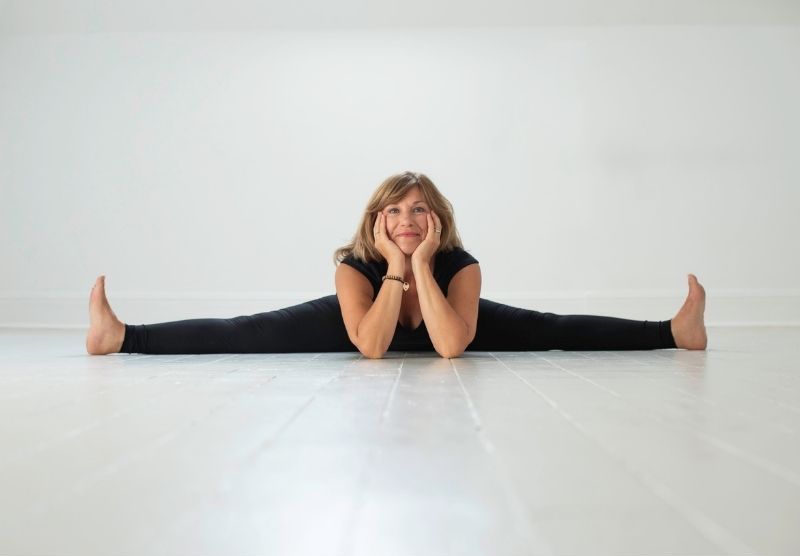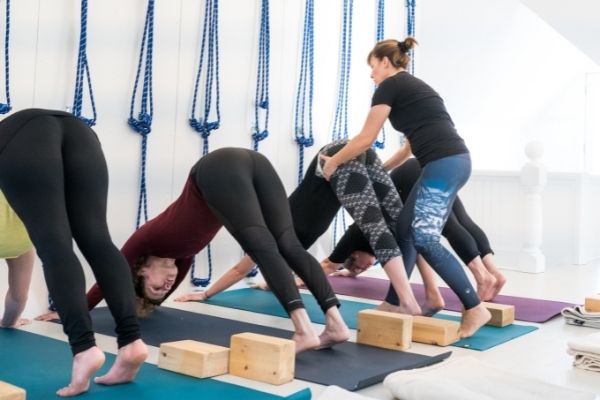You’ve probably heard that “sitting is the new smoking,” a phrase perhaps coined by James Levine, a professor of medicine at the Mayo Clinic, who told the LA Times, “Sitting is more dangerous than smoking, kills more people than HIV and is more treacherous than parachuting. We are sitting ourselves to death.” This is a pretty dire prognosis indeed and sounds alarmist but when you think about it, we sit for most of our waking hours! In front of screens, steering wheels, desks, at coffee shops, on couches, bar stools, benches and beds. We seem to sit on anything that is handily available for us without much thought. It’s almost as though we are just too tired or fatigued to hold ourselves upright these days. And, honestly, who can blame us? There’s a lot of heaviness going around and it is truly tiring.
While some may argue that sitting is indeed the new smoking, I would argue that it depends on how you are sitting and what you are sitting on. I would argue that sitting on the ground on a pillow or cushion or yoga block or nothing is actually the antidote to “sitting is the new smoking”. When we sit with our sit bones closer to the element of earth, we get instantaneous feedback. It’s just up to us whether we pay attention or have cultivated a sense of awareness that allows us to act on that feedback.
Why, because when we sit close on the element of earth we actually have to work to keep ourselves upright. We are being active sitters rather than passive. We are bringing increased range of motion and circulation into the legs, hips, pelvis and, ultimately, into the organic body. We don’t slouch like we do when we sit in the modern version of a chair and we are much more aware of how we are sitting and what is going on in our body when we are sitting. I would argue that sitting on the floor makes us sharp while sitting in a chair or on a couch makes us torpid.
As I tend to view life through a yogic lens, the art of sitting has been on my mind for a while now, in terms of how we can use practice to offset some of these ingrained patterns (samskaras) of behaviour and movement. Perhaps these thoughts were inspired by a class that I took or a class that I taught or something that I noticed in my personal practice – perhaps it is a combination of these things.
Hips do seem to present themselves frequently in a yoga class even when they’re not necessarily the focal point or the theme of any particular class. Usually hip range of motion becomes an obstacle many modern yogis face when they try to attempt the seated asanas (poses). To address this, a few years ago I decided to put a yoga for healthy hips class on the schedule to test the waters and see if students were interested in taking a deep dive into hip function and form. Initially I worried that I would run out of content, that I had boxed myself into a subject that would eventually dry up.
It’s been almost 3 years now and I feel like we’re still just scratching the tip of the iceberg in terms of the work that can be done in the hip region through the practice of yoga AND I have noticed a significant improvement in the range of motion, mobility, stability, and strength that is now present in the students that regularly attend these classes. AND, this is one of my best attended classes!
During class a student asked me how I did a certain seated pose. My initial response, obviously, was “practice”. But I went away and contemplated this question a little bit more. What was it that really actually gave me that range of motion? What was it that made that intermediate level seated pose available to me? Yes, years of dedicated practice have put money in my yoga bank and has availed me specific ranges of motion that may not be available to folks that haven’t focused on the same type of practices. But what I came to realize was that it’s the fact that I sit on the floor.
When I say I sit on the floor, I mean I sit on the floor A LOT. I sit on the floor to do my administrative work, to watch television, to play with my dogs, and sometimes even to eat my meals. When I have to sit in a chair, I generally sit in a cross legged position – which tends to make being invited as a dinner guest a little challenging for me! It’s just habitual and feels better for me than letting my legs dangle down towards the floor. Also, I tend to move around more so I find that I get out of slouching patterns before they take hold.
I love fielding questions from my students because it gives me the opportunity to answer the question in the moment, but it also gives me opportunity for further contemplation. As a teacher, I am always striving to find better ways to communicate to my students so that they can translate what I’m trying to tell them in their own unique bodies, so that they can experience the transformational and powerful effects of the practice of yoga.
Regardless of whether you practice yoga or not, whether you are a casual or ardent practitioner, if you have hips I highly recommend spending some time sitting on the floor. If you like challenges and like to know where you are at in terms of mobility, stability and strength, try to get up off of the floor without using your hands. Intrigued? Google it! I am sure you will find some inspiration – your hips will thank you.
I appreciate you reading this post almost as much as I am passionate about sharing my love of sitting – close to the ground. If you are interested in diving deeper into the Art of Sitting, email me lori@yogajourney.ca and I will send you a 30 Day Virasana Challenge complete with videos and techniques on how to practice this essential seated pose.
“Asana is perfect firmness of body, steadiness of intelligence, and benevolence of spirit.” BKS Iyengar
Namaste




